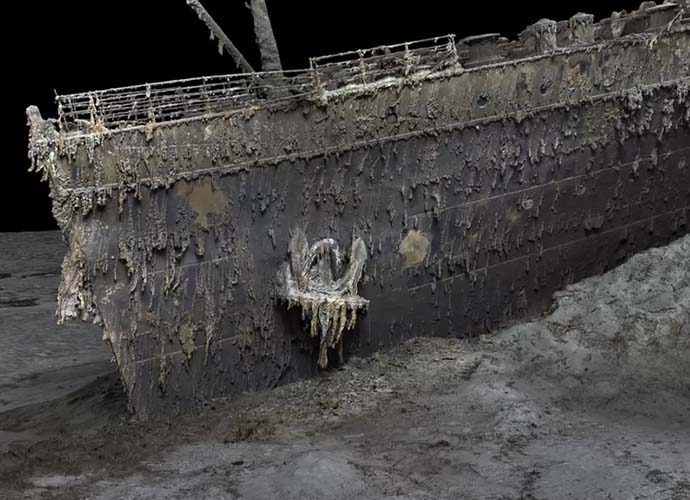5 Titanic Expedition Submersible Passengers Presumed Dead From ‘Catastrophic’ Explosion
The Coast Guard has announced their new findings on the missing Titanic submersible – it is now believed that all five passengers have died in the Atlantic.
At 11:48 a.m. today, the Coast Guard announced on Twitter that debris from the submersible had been found by an ROV on the floor of the ocean. They found “five major pieces of debris,” which includes the tail cone and the back and front ends of the pressure hull of the sub and was found about 1,600 feet away from the Titanic.
This discovery ended the four-day search and rescue mission, which was an international effort. The U.S. Coast Guard received support from the United Kingdom, Canada and France.
The Coast Guard held the media briefing this afternoon at three pm.
OceanGate Expeditions and the Coast Guard believe that the debris found is consistent with the theory that there was a “catastrophic loss of the pressure chamber,” which would have immediately killed all five passengers.
Rear Admiral John Mauger officially announced the end of the search.
“On behalf of the United States Coast Guard and the entire unified command, I offer my deepest condolences to the families,” he said.
It has also been clarified that the banging noise heard underwater, which was thought to be from the sub, was in fact not related to the sub.
The Coast Guard will continue to use the robots to explore the scene in order to find out more details about the explosion. They are hoping to find enough evidence to piece together a suspected timeline of events.
They clarified that it is unlikely that the victim’s bodies will be recovered, as Admiral Mauger puts it, “This is an incredibly unforgiving environment down there on the sea floor.”
The robots that found the debris were deployed just this morning in a last-ditch attempt to save the people.
Two of the robots were Victor 6000, which was onboard the French ship L’Atalante. They were deployed this morning at 7:30 a.m. The robot subs are controlled via a remote and can go down to 20,000 feet of water to reach the Titanic wreck, which is at 12,500 feet, around two hours after it is released into the water.
The plan was that if the sub was found, the robot would attach a cable to it and the ship would pull it out of the water.
This plan followed the best scenario case, but it still encompassed a host of problems including the limited air supply and the amount of time it would take to pull the sub out.
The sub was supposed to run out of oxygen this morning, around 6:00 a.m. or 7:00 a.m., as it only had enough air for 96 hours.
In addition to these two robots, the Coast Guard received another ROV from Canada that was on the Horizon Arctic ship. The Coast Guard announced these updates this morning on their Twitter account.
RELATED ARTICLES
Get the most-revealing celebrity conversations with the uInterview podcast!







Leave a comment